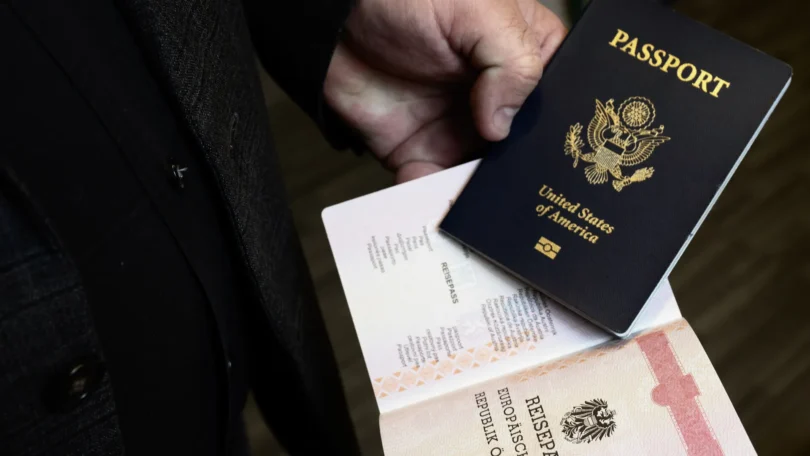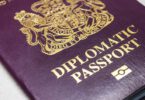A diplomat is an international personality who works for his or her home country in a foreign land, he or she might also be working for an international organization, like the World Bank, the United Nations, the European Union, the African Union, African Development etc. These sets of foreign nationals Diplomatic personnel undergo rigorous selection and training before representing their country abroad. Except in a few cases, those conducting diplomacy are usually professional diplomats, whether ambassadors or third secretaries, or specialists in their various professions. Diplomats and other foreign government officials travelling to the United States to engage solely in official duties or activities on behalf of their national government must obtain A-1 or A-2 visas before entering the United States. They cannot travel using visitor visas or under the Visa Waiver Program. Except for a Head of State or Government – who qualifies for an A1 visa regardless of their purpose of travel your position within your country’s government and your purpose of travel determines whether you need an A-1 or A-2 visa. The US government also issued an A-1, A-2 to immediate family members of diplomats and government officials who had already received an A-1, A-2 visa with few exceptions. Personal employees, attendants, or domestic workers for diplomats and government officials (holding a valid A-1 or A-2 visa) may be issued A-3 visas.
Types of US Diplomatic Visa and Eligibility Conditions
There are categories of US diplomatic visas. These categories also determine who and who qualifies to apply obtained same. Some of the categories include:
A-1 Visa: This Visa policy is designated for the head of Government, irrespective of the purpose of travel, Ambassadors or Consulate generals of foreign countries sent to serve in the United States. Career diplomats working for foreign missions in the US also qualify for an A-1 visa.
A-2 Visa: One qualifies for an A-2 visa if he or she is A foreign government official or full-time employee assigned by that government, coming only to work at a foreign embassy or consulate in the United States, to perform duties which take place at an embassy or consulate Government official representing your government, coming to the United States based on written request of your country to perform official, government related duties for not more than 90 days European Union and African Union representative are also granted an A2 Visa upon their application
A-3 Visa: Personal aid or assistance to the holder of an A-1 A-2 diplomatic visa holders can get an A-3 visa if he or she is Supporting staff to A foreigner with in valid A-1 or A-2 A foreigner with in valid A-1 or A-2 status may bring their staff or support personnel with them to the U.S. on an A-3 visa. An A-3 visa, however, is only valid for three (3) years, however a two (2) year extension may be granted.
G Visas: The G categories of visa is issued by the United States government for representatives of international organizations like the United Nations, the African Union, the European Union etc
Requirement For A US Diplomatic Visa
All applicants for A and G visas should gather and deliver the following required documents to the U.S. Embassy or Consulate in your home country:
- Passport valid for travel to the United States – Your passport must be valid for at least 6 months beyond your period of stay in the United States (unless exempt by country-specific agreements). If more than one person is included in your passport, each person who needs a visa must submit a separate application.
- Nonimmigrant Visa Application, Form Ds-160
- Photo– You will upload your photo while completing the online Form DS-160. If the photo upload fails, you must bring one printed photo in the format explained in the Photograph Requirements.
- A diplomatic note- This note is written confirmation from your country’s government of your status and official purpose of travel. A-3 applicants also require diplomatic notes to confirm the official status of their employers. Beginning July 1, 2014, the sending government must provide the following information in the diplomatic note submitted with any A-1 or A-2 visa application outside the United States, and for any request for a change into such visa status in the United States:
- the government official’s or employee’s name, date of birth, position and title, place of assignment or visit, purpose of travel, a brief description of his or her duties, travel date, and the anticipated length of the tour of duty or stay in the United States, and
- the names, relationships, and dates of birth of any dependents and other members of the household who will be accompanying or joining the government official or employee.
- For an immediate family member applying separately from the principal visa applicant- A copy of both the visa and the I-94 (both front and back) for the principal visa holder is required.
Note that Additional Documentation May Be Required hence applicant is required to Review the instructions for how to apply for a visa on the website of the embassy or consulate where you will apply. Additional documents may be requested to establish if you are qualified.
How to Apply for a Diplomatic Visa
The process of obtaining a diplomatic visa for the U.S. is slightly different from standard visa applications, given the specialized nature of the purpose of the visit. Here’s an overview of the typical process:
- Diplomat’s Qualification Status: The applicant must first ensure that they qualify for a diplomatic visa under the relevant category (A or G). Eligibility is determined by the role of the applicant, such as being a government official or an employee of an international organization.
- Complete the DS-160 Form: Diplomatic visa applicants are required to fill out the DS-160 form, which is the standard visa application form used for most non-immigrant visas.
- Submit a Visa Application: Diplomatic visa applications have to go through the U.S. embassy or consulate in their home country. However, some diplomats may have their visa applications processed directly through the U.S. Department of State or other relevant U.S. government bodies.
- Schedule and Attend an Interview (if required): While some applicants may be exempt from attending an interview, many diplomats are required to meet with a U.S. consular officer to verify the nature of their diplomatic mission.
Validity
A diplomatic visa when issued will allow an individual to travel to the U.S. for official purposes. The duration of stay varies based on the nature of the visit, but diplomatic visas are generally valid till the end of the mission of the Diplomats holding the Visa
Cost of getting a Diplomatic Visa
Individuals who qualify for an official visa classification A, C and G are exempted from paying visa fees.
Restrictions of Holders of The US Diplomatic Visa
Holders of a US diplomatic have the following limitations:
- Non-Immigrant Status: Diplomatic visa holders are expected to leave the U.S. once their official duties or mission are completed. They are not allowed to seek permanent residence or employment in the U.S. through this visa category.
- Strict Purposes: The U.S. government closely monitors and regulates the use of diplomatic visas to ensure they are only used for official purposes. If a diplomat engages in activities outside the scope of their duties, they may face deportation or other penalties.





